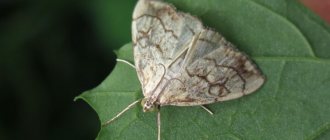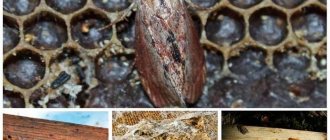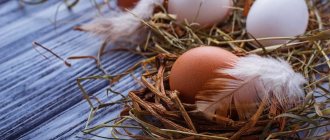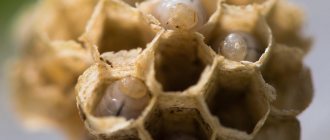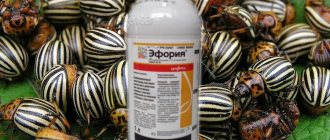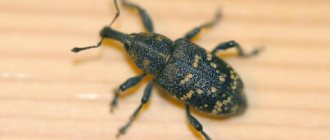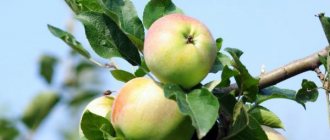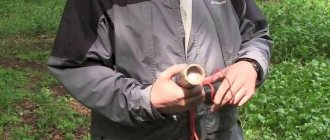0
(0)
During the honey harvest period, beekeepers try not to add foundation so that honey is not wasted on building combs. But in reality, wax is synthesized from pollen, but not just any pollen.
There is an opinion that wax is produced by hive bees, which consume large quantities of honey. By allowing bees to rebuild 1 kg of honeycomb, you can lose up to 4 kg of honey. Sometimes novice beekeepers deliberately do not substitute foundation, trying to increase the productivity of the hive. It remains to find out what bees actually make wax from and where the number “4” comes from.
Physico-chemical parameters and composition
Wax is a unique biologically active product of complex chemical composition, and the secret of its appearance is known only to bees, which humanity has not yet been able to recreate artificially.
Color. The original substance produced by the bee has a transparent structure. Wax made from special raw materials is almost opaque and has a color ranging from white to various yellow varieties. The specific shade depends on the impurities and type of pigments:
- propolis gives a greenish-yellow color;
- natural yellow tones are provided by carotenoids;
- iron oxide colors the substance in brownish tones;
- brass colors the bee product bright yellow;
- copper impurities give the component a green tint;
- nickel makes the api product grayish-yellow;
- zinc colors the substance dark gray.
In order to get 1 kg of wax, bees eat 3.6 kg of fresh honey and some pollen. Bees seal cells with honey with wax and build honeycombs from it.
When exposed to sunlight, the substance becomes lighter.
Smell. It has the aroma of honey collected from a certain type of flower stalk. Smells slightly of propolis. The extracted and industrial product has a specific odor.
Taste. Does not have a pronounced taste.
State of aggregation. At room temperature it is a solid. At 20⁰С (and below) it becomes brittle and elastic-plastic. At 35⁰С (or more) the plastic substance softens.
Melting point – from 60⁰С to 70⁰С. After the temperature rises to 90⁰С – 100⁰С, moisture is removed from the wax. The decomposition of the product begins at 140⁰С – 150⁰С.
Beeswax is a complex mixture consisting of more than 300 chemical compounds.
Solubility. The api product is insoluble in aqueous media and glycerol. Partially soluble in gasoline, acetone and some alcohols. Completely dissolves in the presence of fats when heated above 30⁰C.
Compound. Includes about 50 chemical compounds, including:
- esters (melissil alcohol and palmitic acid);
- free fatty acids (cerotinic, neocerotinic, lemon balm, montanic);
- polyhydric alcohols;
- alkanes (or saturated hydrocarbons);
- coloring matter (lutein, cerochromatin, chrysin);
- antibacterial components;
- carotenoids;
- aromatics;
- water.
How to heat natural white wax from old frames
Bee wax should be melted using wax melters. There are four ways to process beeswax:
- The heating is dry. In this case, a solar wax melter is used. The presented method allows us to obtain the highest quality and purest product. After processing, about 70% of the substance is retained.
- Steam heating. It is done using steam wax melters of various configurations. Hot steam pours hot condensate over the raw material, causing the wax to melt. After processing, 60% of the foundation remains.
- Water heating. This method involves melting raw materials in a volume of water through boiling. Most of the wax floats to the surface. By the way, this method is still relevant in many small apiaries. In production, it is subsequently subjected to pressing.
- Extraction. It is produced by various methods: hot alcohol, gasoline, nefras, etc. The factory mortar is soaked in some solvent. The product is evaporated under filtered extract conditions.
To dissolve white wax from old frames, you need to perform several manipulations:
- Trim the honeycomb around the perimeter of the frame.
- Pull the wire out of the frame.
- Place honeycomb cuttings into water. The melting point of beeswax is 45-65 °C.
- Heat until all particles are completely dissolved.
- After boiling, take out the melted merva and place it in bags.
- Place the bags under the press, squeeze out the remaining liquid and leave the wax to dry.
Any iron container is suitable for this procedure. This parameter depends on the volume of initial raw materials.
Garden varnish based on beeswax
The benefits and harms of wax
The wax contains pollen, propolis, minerals and vitamins, which are not destroyed even after overheating.
The beneficial properties of bee products include:
- plastic;
- regulation of the state of aggregation using accessible methods;
- antibacterial and protective;
- naturalness;
- availability;
- unpretentiousness in storage;
- maintaining quality for a long time;
- special chemical and organoleptic properties;
- safety (registered as food additive E901).
Wax is the richest source of provitamin A: 100 g of wax contains about 4 g, while 100 g of carrots contains only 0.01 g.
Scientists have calculated that wax contains 80 times more provitamin A than beef. Disadvantages of wax:
- allergen content (like all bee products, wax can cause allergic reactions);
- the ability to accumulate poison - thymol (used when processing the hive);
- limited quantity (meaning natural bee product);
- seasonality of collection (summer - autumn);
- dependence on diseases (wax is not collected when the hive is infected with varroa);
- the need for veterinary control of raw materials.
Medicinal properties of the substance
Is it possible to eat honeycomb wax?
Beeswax is positioned as a panacea for all diseases. However, you need to have common sense and realize that this product is relevant for the prevention and treatment of mild forms of disease. In ancient times, wax was used instead of a toothbrush and paste, because it is elastic and easy to chew. It really freshens breath and relieves gum inflammation. Zabrus is used to treat the mucous membranes of the mouth (relevant for stomatitis, toothache, inflamed gums).
Foundation is also used to treat ENT diseases (pharyngitis, tonsillitis). After chewing the product, there is no need to spit it out, as it acts on the body as a sorbent, removing toxins and purifying the blood.
Other ways to use wax:
- External ointments for the treatment of skin defects (rashes, boils, calluses, wounds, etc.).
- Internally. The presented substance actively affects the functioning of the gastrointestinal tract, improving intestinal motility. The wax has antibacterial properties, which allows you to cleanse the intestines and normalize the microflora.
Many beekeepers claim that wax allows you to say goodbye to even such a bad habit as smoking. To do this, you need to chew the wax every hour every day for two weeks or longer.
The product itself has been little studied by scientists. All the recipes that consumers use were inherited from their great-grandfathers, but they have no scientific basis.
Bee foundation
Where do bees get wax?
Did you know that nowadays even candies containing wax are produced.
Chewing them enhances the production of saliva and gastric juice and thereby promotes good digestion and strengthens gums and teeth. Many beekeepers believe that hive insects produce auxiliary products using collected honey as a raw material. This is not entirely true. So, where do bees get honeycomb wax from?
The plastic yellowish material is the result of a bee’s life. How do bees make wax? Winged insects produce the substance using special wax glands that secrete a viscous, colorless secretion.
The production of the required component is assigned by nature to working females. The substance appears on the surface in the form of whitish plates on the abdomen.
Wax is added to sunscreens for the skin, emulsions and balms to treat burns.
The bee begins to produce cellular wax at the age of 12 – 18 days. Most of the substance is produced by young individuals. The ability to produce a product is considered one of the key characteristics of the breed.
It is believed that there is a direct relationship between the size of wax glands and the rate of production of the substance. There is no loss of wax: bees of any breed produce a product, so each bee’s home contains some amount of the wax component.
History of the issue with excessive consumption of honey
It is believed that wax is produced by the glands of bees at the age of 12-18 days. And the researchers calculated exactly how much honey it takes to build 1 kg combs.
There are at least three examples:
- Journal of Bees (1994-2), professor Bogolyub Konstantinovich: 3.5 kg;
- Beekeeper (2002): 3.5-6 kg, but if the wax was produced by an old bee, the numbers double!
- Brochure “Small Agricultural Library” (Bulgaria, 1986): 8 kg.
All these figures were obtained objectively. And they can be misleading.
Cell detuning cannot cause a decrease in honey productivity. The productivity of brood rearing also increases, according to the Bulgarian researcher Radoev. In his experiment, three bee colonies built honeycombs and raised brood. The best result was obtained with the possibility of detuning the cells.
1 kg of wax is a lot: 16-17 Dadan nesting frames, if they already had a sheet of foundation, and 8-9 if the wax is melted.
What ingredients is the substance made from?
A traditional medicine recipe is to chew wax to stop smoking.
The insect fills the crop with nectar, after which the sweet flower juice is filtered in the mouthparts. The purified nectar is sent to the address cell, and the result of filtration (pollen particles) is used as feedstock for wax production. Accordingly, the better the honey bribe, the more wax the winged workers can produce.
To produce wax, bees use only the pollen that enters the body along with nectar. Particles of the plant component that stick to the “coat” are cleaned off using foot brushes and later used to make beebread.
Inhalations
For the prevention and treatment of ARVI, acute respiratory infections, and for the treatment of cough, inhalations based on beeswax are used. Also, simply chewing the product helps to cope with sore throat, rhinitis and asthma.
Place 50 g of propolis and 30 g of wax in an enamel pan. Melt in a water bath. Inhale the vapors for 15–20 minutes twice a day. The procedure lasts up to ten days. After four days you can repeat the course.
How bees make wax honeycombs
The first mention of the use of wax as a medicine is contained in the Egyptian “Ebers Papyrus,” dating back to 1700 BC.
The hexagonal cells that make up the “bee kingdom” are constructed by workers from a special type of wax that insects produce shortly after waking up from hibernation.
To build honeycombs, you need a suitable temperature (about 35⁰C), at which the required consistency and plasticity of the wax “building material” is maintained. The correct temperature conditions allow you to construct cells of the ideal shape and desired size.
Despite the fact that flower nectar is needed to accumulate raw materials in the body, the family begins building honeycombs in early spring - before the bees go for the first bribe. The construction of cells is an important part of preparing for the season.
Interesting to know. Many ancient doctors, including Hippocrates, recommended applying warm wax to the head and neck of a patient with a sore throat. In the Middle Ages, wax, along with honey, was used to prepare various medicinal products.
The team has “builders” of different specialties, and each bee is responsible for its own area of work: the foundation is laid separately, after which the bridges are formed and the honeycombs are built. The finished structure is additionally polished to a shine. During the construction process, insects build honeycombs, moving from top to bottom - from the roof to the floor.
Finished honeycombs are “maintained” in a special way - those infected with mold are cleaned and disinfected, and damaged ones are restored.
The process itself looks like this:
The wax-producing workers hang inside the hive near the ceiling. The insect's head is directed upward, and a lower “drummer” is attached to the hind legs, which takes part in the construction of honeycombs. A chain of bees is formed.
Did you know that before the invention of paper, letters were written on flat wooden boards coated on one side with an even layer of wax. They used a special metal stick with a pointed end to write like a pen; and with its blunt end, if necessary, smoothed out the scribbled surface.
As soon as a viscous substance emerges from the glands, the bee leaves its “post” in the chain and crawls up. The plates of transparent substance are captured by the paws and crushed in the oral apparatus, where the wax is moistened with saliva.
The resulting mixture is spread in small portions onto the work surface, gradually forming a hexagon.
If a mediastinum has already been formed on a base (for example, foundation) - a natural or artificially created first cell, then the honeycombs are built in two directions from the initial hexagon.
All combs, except queen cells, have a standard size - about 5.7 mm in diameter and 12 mm in depth. Queen cells are larger - about 10 mm and are needed for the queen to lay eggs or hatch a new queen.
Home Recipes
The use of wax in cosmetology and medicine is explained not only by its positive effect on health, skin, hair, but also by the fact that it is quickly absorbed. When using it, all kinds of masks, creams, ointments, balms and even patches are made. You can also make several useful medicinal and cosmetic products from wax at home.
Beeswax ointment
Beeswax ointment
To make a healing product, you will need to mix 25 g of wax and 250 ml of olive oil, as well as half a boiled chicken egg and cook in a water bath for about 20 minutes. The resulting mixture is expressed through cheesecloth into a jar and then closed. It must be stored in a cool place.
This ointment recipe is used to heal open wounds, abscesses, sore throats, etc. If you need to cure, restore the skin, joint, the ointment is used 2-3 times a day, externally. If it is necessary to cure a disease of the throat, stomach or problems with stool, then the ointment is taken orally 1-2 times a day, like a simple balm.
Compress for pain in joints and muscles
Melt a teaspoon of wax in a small saucepan. Then the fire is turned off, and 50 ml of vodka, 2 s. is poured into the wax. l. calendula extract. The mixture is placed on fire and heated. It should be very warm, but so that you can dip your finger into it. Now soak gauze or cotton cloth with this product and place it on the sore spot. And so that the lotion does not fall off, you need to tape it to the body with cellophane. The duration of the procedure is half an hour. For regular pain, lotions are applied once a day for 10 days.
Compress for pain in joints and muscles
Recipe for ointment for cracked heels
For 100 ml of propolis tincture, take 100 g of wax and the juice of a medium lemon. All ingredients are mixed. Small cakes are made from this mass. These are the ones that need to be applied to problem areas for 5-10 hours (you can wrap them overnight). The result is visible after the first use, but ideally 3-5 procedures are carried out.
Above, homemade wax recipes for medical procedures were proposed. But you can also make useful cosmetics from wax.
- Face cream will moisturize the skin and even out the tone. For the cream, mix 100 ml of olive and almond oil and add 50 ml of melted wax. It is recommended to add a couple of drops of vitamins E and A. If desired, you can add essential oil to improve the aroma.
- A hair mask will strengthen the roots and reduce hair loss. To prepare the mask, 50 g of wax is softened and a decoction of hop cones (500 ml) is added to it. This mask should be applied for 20 minutes and then rinsed off under running water.
- Lip balm is made from a teaspoon of beeswax and the same amount of almond oil. It is also necessary to add 2 tsp to this mixture. cocoa butter The resulting mixture is melted and poured into a convenient jar. Use the balm as needed.
Why do bees need wax?
Interesting to know.
For many centuries, artists used wax-based paints: they had both extraordinary durability and remarkable shine. And although now the latest technologies have seriously displaced wax painting, wax still serves as the most important element of oil paints. Bees use wax to build honeycombs - special hexagonal cells of four types. Hexagons are classified by purpose:
- bee (for brood, storage of honey and bee bread);
- honey (in the upper and side parts of the section);
- drones;
- queen cells (for breeding queen bees).
Since wax has bactericidal, antifungal and antiviral properties, unripe honey placed in the holes does not ferment or mold.
Best before date
Wax can be stored for a long time without losing its beneficial properties. If the substance is stored correctly, it will not lose its taste, color, or smell. It is noted that wax does not lose its characteristics for 3-4 years (density, color, appearance), in some cases this indicator is higher. However, beekeepers note that wax does not have a shelf life as such, but stipulate that for medicinal purposes it is better to use wax for up to 3 years.
No special storage conditions are required. The main rule is that the wax does not combine with other food products and does not absorb foreign odors. The same cannot be said about old honeycombs. If the wax is not melted in time, it will be destroyed in a short time by wax moths.
Beeswax is a unique natural product that is widely used in folk medicine and cosmetology and can be stored for a long time without losing its properties. To understand the value of a product, you need to know how bees make it, what post-processing is needed and where it is used.
Where and how is beeswax used?
About 5,000 years ago, the secret of making encaustic paints using wax was discovered. Paintings painted with such paints have survived to this day.
Beekeeping
From wax raw materials, foundation is produced - small plates that form the basis for the construction of honeycombs and speed up the construction process.
Medicine
In therapy and pharmaceuticals, the antibacterial, antifungal and anti-inflammatory properties of the component are valued: wax is used as a lipid base or emulsifier in the production of plasters, suppositories, creams, ointments, suspensions and mastics. The so-called dental wax has become widespread.
Cosmetology
Interesting to know.
In the Middle Ages, wax, along with honey, was used to prepare various medicinal products. In the “Canon of Medical Science,” the famous ancient Arab scientist Avicenna proposed using wax in many of his medicinal recipes. Wax is used as a fatty base and emulsifier in the manufacture of lipsticks, solid perfumes, creams and ointments. Due to its special thermal properties, the material is used for hair removal.
Metallurgy and jewelry making
Lost wax models and casting molds are made from wax.
Caring for furniture and art objects
A wax protective film is applied to marble statues. Furniture and parquet made of natural wood are treated with wax mastic.
Food industry
Any products and products prepared with the addition of components of bee activity should be used only if there are no contraindications.
The bee product is registered as a food additive and is widely used in the food industry. In particular, the surface of hard cheeses is protected with a wax film.
There are still irreplaceable ones!
Even the ancient Greeks made wax dolls for children, and used wax-coated tablets for writing. They added melted wax to the paints and covered the sides of ships while hot to protect the wood from wind, water and sun. Amphoras with food were sealed with beeswax. Beeswax was used by artists; it was in Greece that encaustic, which is still popular today, was developed - wax painting.
Ancient doctors, including Hippocrates and Avicenna, used beeswax to treat patients. Where is beeswax used today?
- A large amount of beeswax, about 70%, is returned back to the beekeeping industry in the form of artificial wax. Foundation is wax sheets with hexagons extruded on them - the bottoms of the cells, attached to the hive and used by bees to build honeycombs.
- In medicine, wax is added to ointments, suppositories, and emulsions to treat skin inflammation, burns, and wounds.
- In cosmetology, creams, masks, and lipsticks are made using beeswax.
Wax is also widely used in optical factories, railway transport, electrical engineering, woodworking, automotive, glass, and textile industries.
From bees, people get not only honey, propolis, bee bread, but also other unique products, such as wax. This is not a waste product from bee production, as many people think. It is needed not only for the insects themselves, but is also widely used by people.


